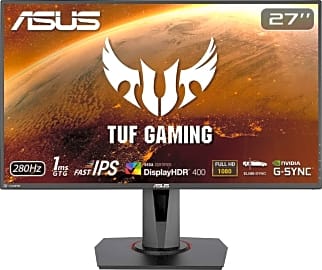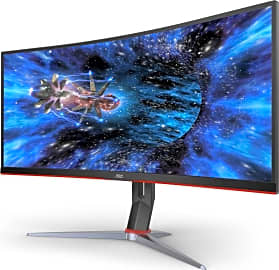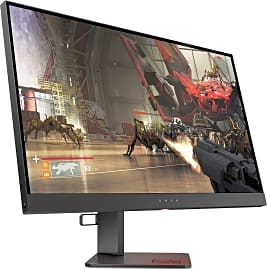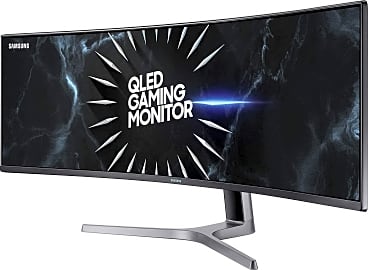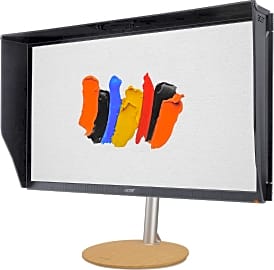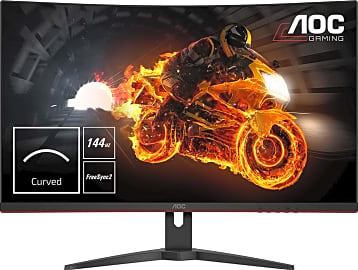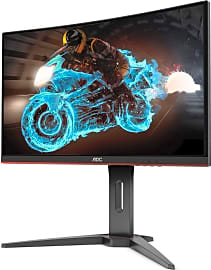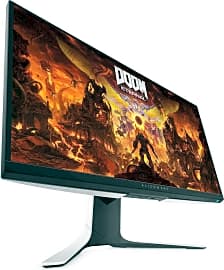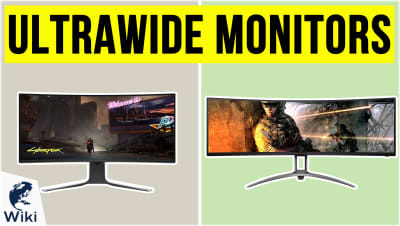The 10 Best G-SYNC Monitors

This wiki has been updated 27 times since it was first published in October of 2018. Tearing, ghosting, motion blur, and artifacts can turn into a literal headache if your monitor doesn't receive one frame from the GPU for each screen refresh. To avoid being locked into 30 or 60 FPS, Nvidia's last few GPU families support a proprietary protocol called G-Sync that actively adjusts refresh rates to meet the graphics card's output, for smoother and more lifelike movement than ever. When users buy our independently chosen editorial picks, we may earn commissions to help fund the Wiki.
Editor's Notes
September 30, 2020:
Right now is a very encouraging time for display technology thanks in part to advances in graphics processor technology that lets gamers take advantage of the premium monitors that are more available than ever. To be clear, we are seeing an increasing number of cutting-edge options like the super ultrawide Samsung CRG9 and professional-quality Acer ConceptD CP7. Both of these examples are quite expensive, but also hard to beat for gaming and productivity.
A similarly premium choice is the Alienware AW3420DW, which is one of the top ultrawides on the market, although it's also pretty expensive. Clear on the other side of the price range, the Alienware AW2720HF is merely a 24-inch 1080p monitor, but it does run at 240 hertz. The HP Omen X 27 is another one from a premium manufacturer, and its 1440p panel maxes out at 240 hertz as well.
There's a solid handful of great options from mid-range manufacturers, too, such as the AOC CU34G2X, which is a great deal for a 21:9 model. If you're a fan of large monitors, it's awfully tough to beat the AOC CQ32G1 at its price, and although it's not the newest release, it's absolutely capable of providing a stellar gaming experience. On the entry-level side of the same company's line is the AOC C24G1A.
We also want to make a note about G-Sync technology itself. There are three levels: G-Sync, G-Sync compatible, and G-Sync Ultimate. While official G-Sync support claims to reduce input lag, there's little to no appreciable difference between it and mere G-Sync compatibility, which a vast majority of new gaming monitors have as long as they advertise AMD FreeSync compatibility. Admittedly, this is somewhat of a coup on Nvidia's part, and as their driver compatibility increases, the number of monitors that support it will only increase. The Ultimate level, on the other hand, guarantees a handful of ultra-premium features including a minimum adaptive refresh rate of 1 hertz as well as 1,000 nits of peak brightness. If you're willing to shell out for a G-Sync Ultimate monitor, you can be certain you're getting a high-quality display.
Finally, if you really want a large-format display, we strongly suggest considering one of LG's latest OLED TVs. In particular, the LG CX is highly future-proofed thanks to its HDMI 2.1 support, which will work great with newest line of GPUs and gaming consoles.
October 25, 2018:
PC displays are moving a little slowly compared to the rest of the field. The latest models are worthwhile because of refinements to components and manufacturing. Older G-Sync hardware, firmware, and software is notorious for being troublesome. Took care to find models with minimal quality control issues.
Special Honors
Asus ROg Swift PG65UQ It's the size of a TV, but it's absolutely a PC monitor, and offers the fast refresh rate and low input lag that gamers need. It does cost quite a bit, but its local dimming and DisplayHDR1000 certification mean it should look better for both movies and games than just about anything else out there. asus.com
Asus ROG Swift PG259QN This newly released, high-performance option is one of the first to offer a 360-hertz refresh rate, as well as one of the first to implement Nvidia's Reflex technology, which actively minimizes input lag by offering intelligently managed keyboard and mouse connections and advanced system communications. The only drawback is that it has a resolution of only 1080p. asus.com



